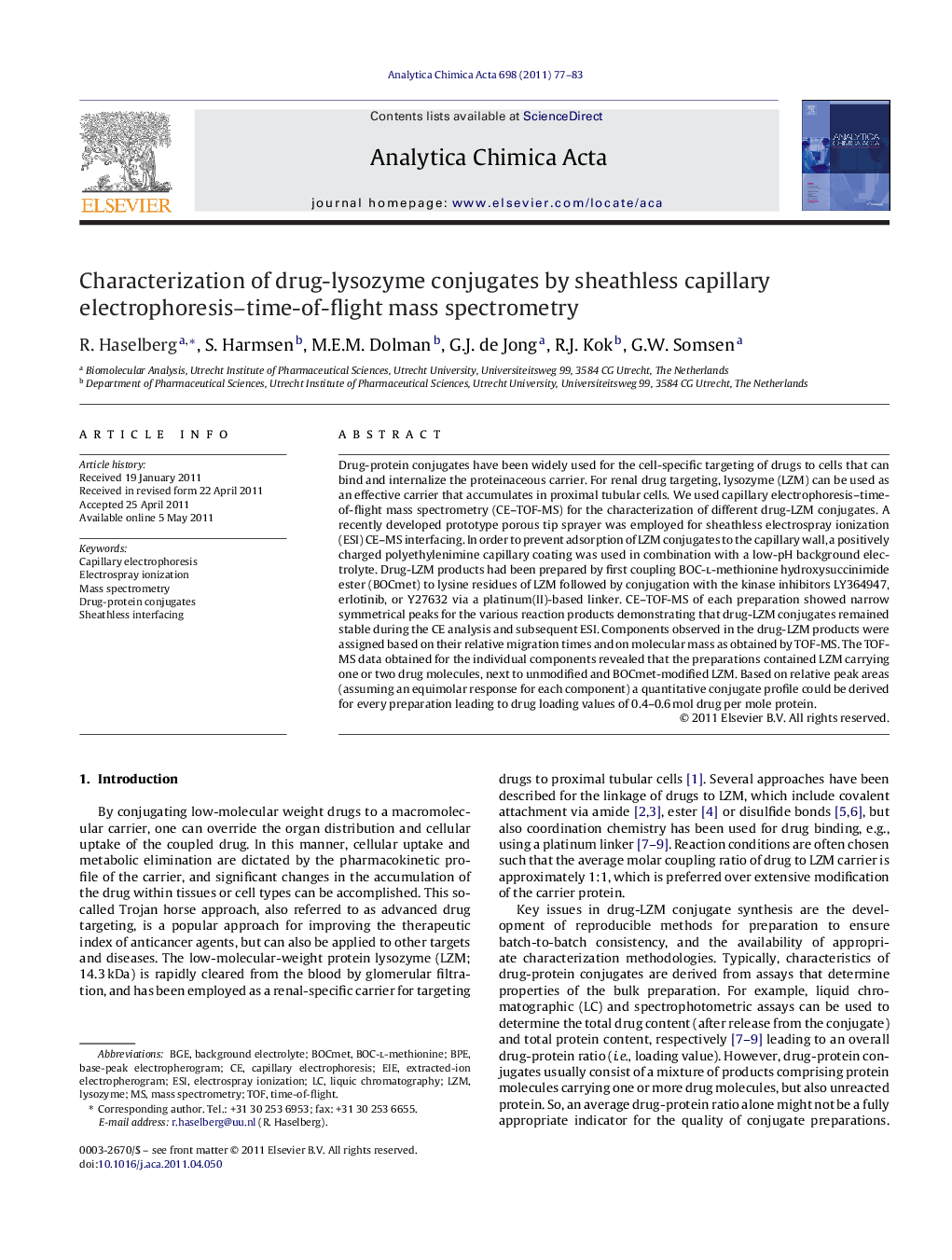| Article ID | Journal | Published Year | Pages | File Type |
|---|---|---|---|---|
| 1166963 | Analytica Chimica Acta | 2011 | 7 Pages |
Drug-protein conjugates have been widely used for the cell-specific targeting of drugs to cells that can bind and internalize the proteinaceous carrier. For renal drug targeting, lysozyme (LZM) can be used as an effective carrier that accumulates in proximal tubular cells. We used capillary electrophoresis–time-of-flight mass spectrometry (CE–TOF-MS) for the characterization of different drug-LZM conjugates. A recently developed prototype porous tip sprayer was employed for sheathless electrospray ionization (ESI) CE–MS interfacing. In order to prevent adsorption of LZM conjugates to the capillary wall, a positively charged polyethylenimine capillary coating was used in combination with a low-pH background electrolyte. Drug-LZM products had been prepared by first coupling BOC-l-methionine hydroxysuccinimide ester (BOCmet) to lysine residues of LZM followed by conjugation with the kinase inhibitors LY364947, erlotinib, or Y27632 via a platinum(II)-based linker. CE–TOF-MS of each preparation showed narrow symmetrical peaks for the various reaction products demonstrating that drug-LZM conjugates remained stable during the CE analysis and subsequent ESI. Components observed in the drug-LZM products were assigned based on their relative migration times and on molecular mass as obtained by TOF-MS. The TOF-MS data obtained for the individual components revealed that the preparations contained LZM carrying one or two drug molecules, next to unmodified and BOCmet-modified LZM. Based on relative peak areas (assuming an equimolar response for each component) a quantitative conjugate profile could be derived for every preparation leading to drug loading values of 0.4–0.6 mol drug per mole protein.
Graphical abstractFigure optionsDownload full-size imageDownload as PowerPoint slideHighlights► We use sheathless CE–TOF-MS to characterize drug-protein conjugates. ► Sheathless interfacing allows detection of the conjugates in the nM-range. ► Efficient CE separation of highly related conjugate products is obtained. ► TOF-MS permits reliable assignment of separated compounds. ► CE–MS allows determination drug loading values and drug-protein stoichiometry.
